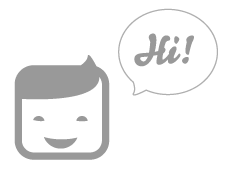App World
My stream

Neural network fuzzy systems
The app is a complete free handbook of Neural network, fuzzy systems which cover important topics, notes, mate...
Free

Store review
The app is a complete free handbook of Neural network, fuzzy systems which cover important topics, notes, materials, news & blogs on the course. Download the App as a reference material & digital book for Brain and Cognitive Sciences, AI, computer science, machine learning, knowledge engineering programs & degree courses.
This useful App lists 149 topics with detailed notes, diagrams, equations, formulas & course material, the topics are listed in 10 chapters. The app is must have for all the engineering science students & professionals.
The app provides quick revision and reference to the important topics like a detailed flash card notes, it makes it easy & useful for the student or a professional to cover the course syllabus quickly before an exams or interview for jobs.
Track your learning, set reminders, edit the study material, add favorite topics, share the topics on social media.
You can also blog about engineering technology, innovation, engineering startups, college research work, institute updates, Informative links on course materials & education programs from your smartphone or tablet or at http://www.engineeringapps.net/.
Use this useful engineering app as your tutorial, digital book, a reference guide for syllabus, course material, project work, sharing your views on the blog.
Some of the topics Covered in the app are:
1) Register Allocation and Assignment
2) The Lazy-Code-Motion Algorithm
3) Matrix Multiply: An In-Depth Example
4) Rsa topic 1
5) Introduction to Neural Networks
6) History of neural networks
7) Network architectures
8) Artificial Intelligence of neural network
9) Knowledge Representation
10) Human Brain
11) Model of a neuron
12) Neural Network as a Directed Graph
13) The concept of time in neural networks
14) Components of neural Networks
15) Network Topologies
16) The bias neuron
17) Representing neurons
18) Order of activation
19) Introduction to learning process
20) Paradigms of learning
21) Training patterns and Teaching input
22) Using training samples
23) Learning curve and error measurement
24) Gradient optimization procedures
25) Exemplary problems allow for testing self-coded learning strategies
26) Hebbian learning rule
27) Genetic Algorithms
28) Expert systems
29) Fuzzy Systems for Knowledge Engineering
30) Neural Networks for Knowledge Engineering
31) Feed-forward Networks
32) The perceptron, backpropagation and its variants
33) A single layer perceptron
34) Linear Separability
35) A multilayer perceptron
36) Resilient Backpropagation
37) Initial configuration of a multilayer perceptron
38) The 8-3-8 encoding problem
39) Back propagation of error
40) Components and structure of an RBF network
41) Information processing of an RBF network
42) Combinations of equation system and gradient strategies
43) Centers and widths of RBF neurons
44) Growing RBF networks automatically adjust the neuron density
45) Comparing RBF networks and multilayer perceptrons
46) Recurrent perceptron-like networks
47) Elman networks
48) Training recurrent networks
49) Hopfield networks
50) Weight matrix
51) Auto association and traditional application
52) Heteroassociation and analogies to neural data storage
53) Continuous Hopfield networks
54) Quantization
55) Codebook vectors
56) Adaptive Resonance Theory
57) Kohonen Self-Organizing Topological Maps
58) Unsupervised Self-Organizing Feature Maps
59) Learning Vector Quantization Algorithms for Supervised Learning
60) Pattern Associations
61) The Hopfield Network
62) Limitations to using the Hopfield network
Each topic is complete with diagrams, equations and other forms of graphical representations for better learning and quick understanding.
Neural network, fuzzy systems is part of Brain and Cognitive Sciences, AI, computer science, machine learning, electrical, electronics, knowledge engineering education courses and technology degree programs at various universities.
Last update
Jan. 16, 2020




 Facebook
Facebook Twitter
Twitter Google plus
Google plus